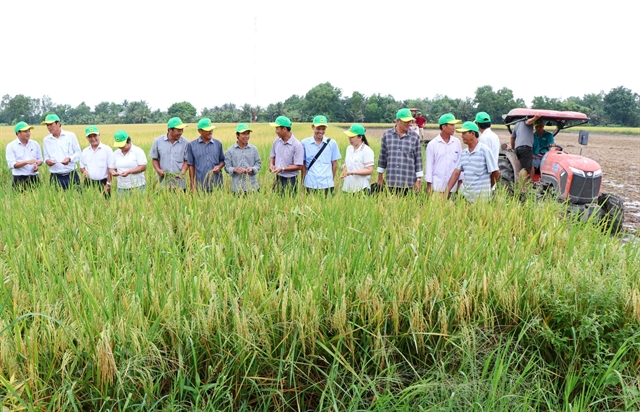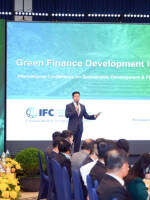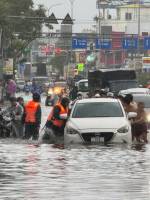
The Ministry of Agriculture and Environment has approved the Low-Emission Crop Production Project for 2025–2035, with a vision to 2050, under Decision No 4024 issued on September 29.
The project aims to transform Việt Nam’s crop sector into a climate-resilient and sustainable system that secures farmers’ livelihoods, ensures national food security and strengthens the country’s position as a regional leader in climate-responsible agriculture.
According to the 2020 national greenhouse gas inventory, Việt Nam emitted 454.6 million tonnes of carbon dioxide equivalent, nearly double 2010 levels. Agriculture contributed 116.5 million tonnes, with crop production accounting for 80 per cent, mainly from rice fields, other staple crops and residue burning.
Rice remains the largest source of emissions, but other crops such as maize, cassava, sugarcane, soybeans, vegetables and fruit trees also hold strong potential for low-emission practices. These include reducing fertiliser use, recycling residues, improving soil health and conserving water.
Global markets are increasingly demanding lower carbon footprints, sustainability certification and traceability. Without urgent action, Vietnamese crops risk losing competitiveness.
Under the decision, by 2035 the project targets a 15 per cent reduction in crop-related emissions compared to 2020. It will establish a ‘Low-Emission’ label for certified products, develop at least five technical packages for key crops and create a national emissions database. Provinces are expected to pilot 15 carbon credit models and at least one to two replicable low-emission models each.
Training will be delivered to around 3,000 technicians, extension staff, farmers and enterprises, while five communication campaigns will promote awareness and behavioural change.
By 2050 Việt Nam aims for all major crop areas to adopt sustainable practices, with production fully integrated into circular value chains, digital technologies and carbon sequestration methods. The ‘Low-Emission’ label will become a standard for Vietnamese crops.
A central task is flexible crop restructuring. Low-yield rice areas will shift to high-value perennials, upland crops or aquaculture. Mixed models such as one rice crop followed by a cash crop will improve soil, increase incomes and cut emissions.
Technical measures will include alternate wetting and drying for rice irrigation; reduced nitrogen fertiliser with more organic and microbial inputs; straw utilisation, conservation tillage and crop rotation; and reduced pesticide use with the adoption of biological control.
Digital technologies such as smart sensors for irrigation and fertilisation, soil analysis, biochar production and carbon storage innovations will be mainstreamed and compiled into technical manuals for farmers.
The project emphasises capacity building and mindset change. Training and communication will cover low-emission techniques, MRV systems, carbon credits and circular production models, supported by manuals, videos and region-specific materials.
Market connection is another key focus. Value chains will link farmers with enterprises for purchasing, processing and export. Certification systems for low-emission crops will be developed, ensuring traceability and branding.
Pilot labelling will begin with rice, fruit, coffee and pepper, later expanding nationwide. Consumer campaigns will encourage green purchasing and build trust in Việt Nam’s climate-friendly products.
With its integrated approach combining restructuring, technology, training, communication and market linkage, the project positions Việt Nam’s crop sector as a pioneer of climate-responsible agriculture. By 2050 it will contribute significantly to the country’s net-zero commitment under COP26 while ensuring both competitiveness and farmer resilience.
(VNS)




